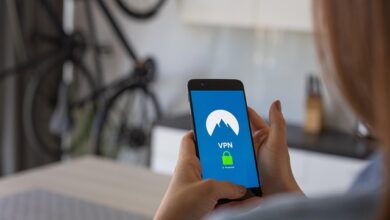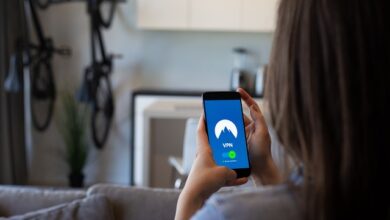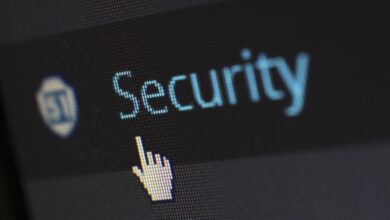How to Use a VPN to Access Blocked Websites

In today’s interconnected world, accessing information and websites has become an essential part of daily life. However, there are times when certain websites may be blocked due to geographical restrictions, government censorship, or network policies. This is where a Virtual Private Network (VPN) comes into play. A VPN allows users to bypass these restrictions by encrypting their internet connection and routing it through servers located in different parts of the world. Below, we will delve into how you can use a VPN effectively to access blocked websites.
What Is a VPN?
A Virtual Private Network (VPN) is a technology that creates a secure and encrypted connection over the internet between your device and a remote server operated by the VPN provider. When you connect to a VPN, your internet traffic is routed through this server, masking your real IP address and making it appear as if you’re browsing from the location of the server.
For example, if you’re in Country A but want to access content available only in Country B, connecting to a VPN server in Country B will make it seem like you’re physically present there.
Why Would You Need a VPN?
There are several reasons why someone might need to use a VPN:
- Bypassing Geographical Restrictions: Some streaming platforms, social media sites, or news outlets restrict access based on geographic location.
- Avoiding Censorship: In some countries, governments block access to specific websites or services for political or social reasons.
- Enhancing Privacy: A VPN protects your online activity from being monitored by ISPs, hackers, or other third parties.
- Secure Public Wi-Fi Usage: When using public Wi-Fi networks, a VPN ensures that your data remains private and secure.
How Does a VPN Work?
When you connect to a VPN, here’s what happens behind the scenes:
- Encryption: Your device establishes an encrypted tunnel with the chosen VPN server.
- IP Address Masking: The VPN assigns you a new IP address associated with the server’s location.
- Data Routing: All your internet traffic is sent through the encrypted tunnel to the VPN server before reaching its final destination.
This process hides your true identity and location while ensuring that your data cannot be intercepted or tampered with during transmission.
Steps to Use a VPN to Access Blocked Websites
Using a VPN to access blocked websites involves a few simple steps. Here’s a detailed guide:
Step 1: Choose a Reliable VPN Provider
Select a reputable VPN service that offers strong encryption, fast speeds, and a wide range of server locations. Popular options include:
- ExpressVPN
- NordVPN
- Surfshark
- CyberGhost
Make sure the provider complies with your needs regarding privacy, speed, and compatibility with your devices.
Step 2: Sign Up and Download the App
Once you’ve chosen a provider, sign up for their service and download the corresponding app. Most VPNs offer apps for Windows, macOS, Android, iOS, Linux, and even routers.
Step 3: Install and Configure the Software
After downloading the app, install it on your device and log in with your credentials. Many modern VPNs come pre-configured, so no additional setup is usually required.
Step 4: Connect to a Server
Open the app and select a server located in the region where the blocked website is accessible. For instance:
- To watch Netflix US content, choose a server in the United States.
- To access BBC iPlayer, opt for a UK-based server.
Click “Connect,” and the app will establish a secure connection to the selected server.
Step 5: Visit the Blocked Website
With the VPN active, open your web browser and navigate to the previously restricted site. Since your IP address now appears to originate from the server’s location, the website should grant you access.
Step 6: Disconnect When Done
Once you’ve finished browsing, disconnect from the VPN to restore your original connection settings.
Choosing the Right VPN Service
Not all VPNs are created equal. Here are key factors to consider when selecting a provider:
- Security Features: Look for robust encryption protocols (e.g., AES-256), kill switches, and DNS leak protection.
- Server Locations: Ensure the provider has servers in the regions you need to access.
- Speed Performance: Opt for a service known for high-speed connections to avoid buffering or lag.
- Device Compatibility: Verify that the VPN supports your operating system and devices.
- Privacy Policy: Choose a provider with a strict no-logs policy to safeguard your anonymity.
- Customer Support: Reliable support is crucial for troubleshooting issues quickly.
Benefits of Using a VPN
Here are some advantages of using a VPN:
- Unrestricted Access: Overcome regional blocks and censorship effortlessly.
- Improved Security: Protect yourself against cyber threats, especially on unsecured networks.
- Anonymity: Conceal your online activities from prying eyes.
- Better Streaming Experience: Enjoy smoother playback of videos and music without interruptions.
- Cost Savings: Take advantage of deals and discounts offered in different regions.
Potential Risks and Considerations
While VPNs provide numerous benefits, they also come with certain risks and limitations:
- Legal Issues: Using a VPN may be illegal in some countries, so check local laws before proceeding.
- Performance Impact: Free or low-quality VPNs can slow down your internet speed significantly.
- Trusting Providers: Be cautious about sharing sensitive data with any company; always research thoroughly.
- Blocking by Services: Some websites actively detect and block traffic coming from known VPN servers.
To mitigate these risks, stick with trusted providers and follow best practices for safe usage.



